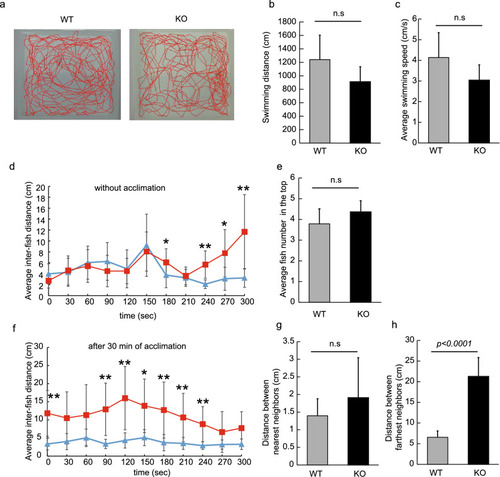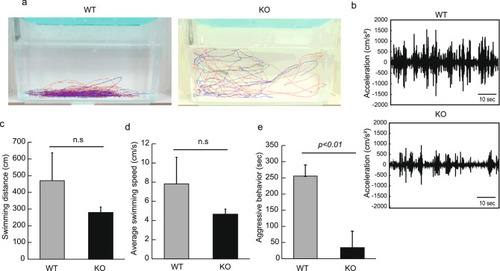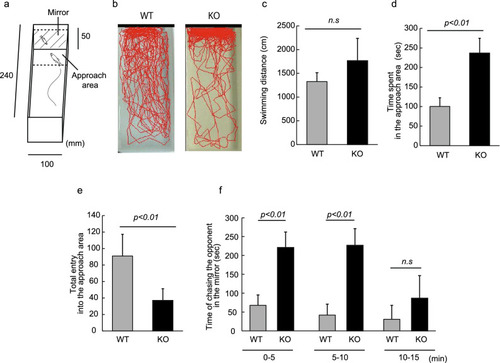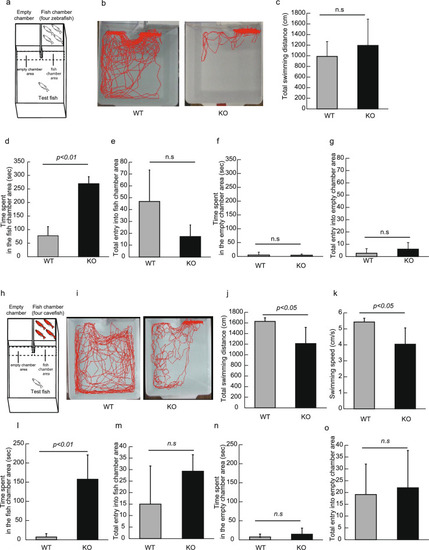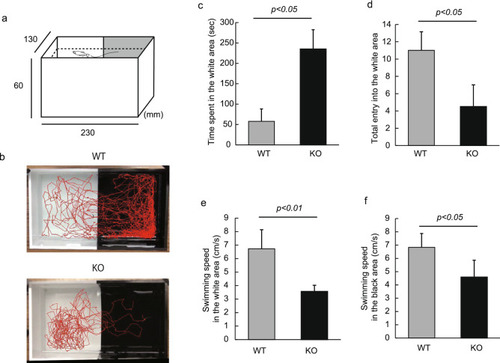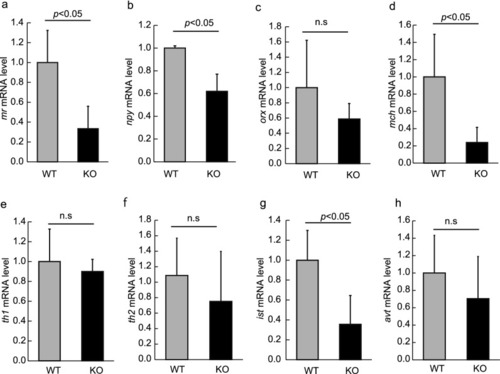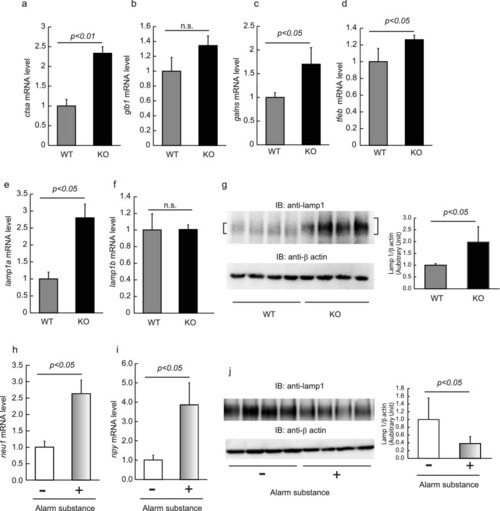- Title
-
Neu1 deficiency induces abnormal emotional behavior in zebrafish
- Authors
- Ikeda, A., Komamizu, M., Hayashi, A., Yamasaki, C., Okada, K., Kawabe, M., Komatsu, M., Shiozaki, K.
- Source
- Full text @ Sci. Rep.
|
Analysis of shoaling in Neu1-KO and WT zebrafish. ( PHENOTYPE:
|
|
Analysis of aggressive behavior in Neu1-KO and WT zebrafish. Two unfamiliar male zebrafish were set in the transparent aquarium and their aggressive behavior was observed for 10 min. ( PHENOTYPE:
|
|
Analysis of Neu1-KO and WT zebrafish behavior in a mirror test. ( |
|
Analysis of social preference in Neu1-KO and WT zebrafish using the 3-chambers test. ( |
|
Analysis of the black–white preference test in Neu1-KO and WT zebrafish. ( |
|
Changes in gene expression in Neu1-KO zebrafish. mRNA levels of |
|
Alteration of glycoconjugates patterns in Neu1-KO zebrafish. ( PHENOTYPE:
|
|
Changes in the expression of lysosomal genes in Neu1-KO zebrafish. mRNA levels of |

